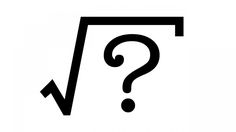How to Calculate a Square Root by Hand

Calculating square roots by hand may be an age-old technique, but it’s important to understand the fundamentals of mathematics and how these values are derived. Although modern calculators and computers can perform the same calculation much faster and with higher precision, learning to calculate a square root manually can help develop a deeper understanding of math concepts. In this article, we’ll outline a step-by-step process for calculating the square root of a number using the long division method
1. Identify the Number
The first step in calculating a square root is identifying the number you want to find the square root of. For this example, we’ll use 16. Our goal is to find the number that, when multiplied by itself, equals 16.
2. Grouping into Pairs
Separate the digits into pairs starting from the decimal point (if any) and moving outward. In our example, ’16’ has two digits, forming one pair: ‘1’ and ‘6’.
3. Identify the Largest Square Root
Find the largest integer whose square is less than or equal to that number formed by the first group of digits (starting from left). In our example, since 3^2=9 falls short and 4^2=16 is equal to our number, 4 is our largest square root value. Write 4 down as your first digit
4. Subtract and Bring Down
Subtract the result of step 3 from the first pair (16 – 16) = 0.
Next, bring down any unmatched digit or group from right as it is; in this case, there isn’t any value remaining for us to bring down.
5. Double the Quotient
Now double your previous quotient (the provisional answer you get after each subtraction). Since our provisional answer was 4 so far in step 3, doubling it results in 8. Write this down, leaving a space for another digit at the end to create a new divisor. We’ll call this our new ‘working number’ which is ‘8_’.
6. Find the Next Quotient Digit
There may or may not be a value to continue calculating with (as our example already reached 0). But if there were a value, we’d have to find a number – let’s call it X – that when added to our working number results in a product that is less than or equal to the remainder obtained in step 4 if we place X in both the empty position and as our next digit of the quotient. More simply put, find an X such that (8_+X)*X results in a product less than or equal to the remainder you had left after step 4.
Since our remainder was 0, there is no further calculation needed in this step.
7. Repeat Steps 4-6
You should continue repeating steps 4-6 until you reach your desired level of accuracy or find the exact square root.
In this example, since our answer is exactly 4 and there are no more digits to bring down, we can conclude that the square root of 16 is 4.
Although this method might seem complicated and time-consuming, it can be handy when dealing with large numbers or when you don’t have access to a calculator. Remember, practice makes perfect! Keep honing your skills and soon enough calculating square roots by hand will become second nature.






